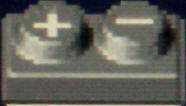 |
Inversion, Connection, and Operation
I have now convinced myself, and possibly you, that the Prius is a valid and reliable source of electric power. But "valid and reliable" isn't quite the same as "useful." If we just stop at the end of the last section, we have, at nearly zero cost, a fine power supply for providing excessive illumination of one's test cart. If your avocation is night road work, you're all set. If you have mundane concerns such as "how can I use this to keep my refrigerator running" or "I need power for my artificial heart," then some more work is necessary. That work involves somehow turning the DC supplied by the vehicle battery to the AC required by your computer, your TiVo, your electric toothbrush, and a selection of other major appliances. In fact, there's even more to accomplish! You have to get the AC to them. And wouldn't it be nice to have it done automatically?
Breaking down the problem into manageable pieces, the following issues must be resolved:
- Connecting the car to a power receptacle
- Turning the car "ON" when necessary
- Converting DC to AC
- Connecting the AC power to household wiring
- Thoughts on emergency power husbanding
Connecting the car to a power receptacle
This is the most interesting problem of the lot. Unlike the others, for which standard commercial solutions are available, this presents some novel issues. In the testing reported here, I simply connected an outlet strip and extension cord to the car battery. This works, has close to zero cost, and may be effective if you're not sensitive to family ridicule. But, if you feel that having an extension cord connected to your car is less than optimal, or perhaps have some concern about pulling the house along with you when you drive away, then some of these concepts may be of interest, and may even be workable.
Turning the car "ON" when necessary
For safety during the tests I connected my power tap to the output side of the Prius HV relay. For use as a "generator substitute" this is satisfactory. Power fails, car turns on, car power is available. But to truly justify the PriUPS, as in "Uninterruptable," claim, the power must be available instantaneously, i.e., from the INPUT side of the Prius HV relay, connected directly to the battery. This isn't a big problem, either conceptually or practically, since the battery is certainly capable of delivering its 5KW (or more) for the few seconds it takes to start up the vehicle. However, if one is going to do this, it's pretty important to make sure that the vehicle is started automatically. What's the best way to do this? What about safety concerns? And how do we make sure that if it doesn't start, the battery doesn't suffer excessive discharge?
- Automatic vehicle startup
- Remote command vehicle startup - internet connection
Converting DC to AC
Here we get into the commercial product realm. There are plenty of applications for converting DC to AC, and plenty of companies make products to do so. It hardly makes sense to build one's own, given the high engineering and development time, unless one is planning to make a business of selling them. So I explored the availability of existing products.
Connecting the AC power to household wiring
The final piece of the puzzle is making all this work together in one's abode. Although the power available from the Prius may well exceed the peak power that your home uses, it also may not. Do you have air conditioning? Do you have a pool pump? Can you live with only a hundred watts to your home theater speakers during emergencies? Maybe it's OK to let a gentle breeze dry your hair instead of using a 1KW or greater blow-dryer. During the exigent circumstance that caused your need for emergency power, there are a number of amenities that can be eschewed for the duration. Your mission is to select them and exclude them from your emergency plan.
Selecting a "transfer switch" and the circuits to be wired
Thoughts on husbanding emergency power
You're all done! Your Prius is now capable of supplying emergency power to your home! There's a power failure. You have light! You have TV and stereo! Oh. You were at work when it happened? Well, no scheme is perfect...
Hey! If I do all the work and provide all the links above, I'm done! Just one more lifetime...
Meanwhile, thanks for your interest and encouragement.
Updated 15 July 2005